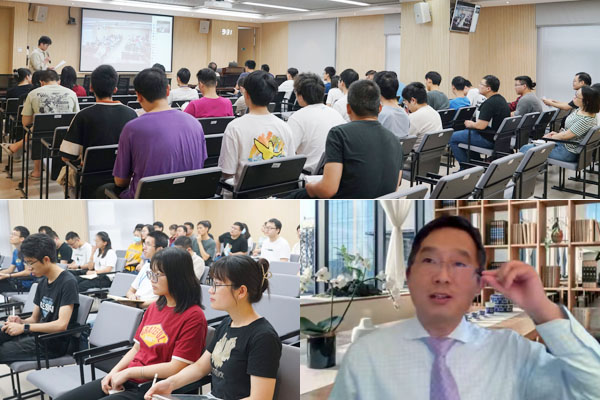
Dr. Xiaoliang Zheng, Chief Scientist of Akron Polymer Systems, was invited by Prof. Xuehui Dong to give an online lecture on Screening and Design of Polymers for Optical Compensation Films. Starting from the basic knowledge of polarized light, Dr. Zheng introduced the application and principle of polarized light in liquid crystal display (LCD) and organic light-emitting diode (OLED) display technology. He focused on the compensation film, a key component for the advanced displays.
LCD and OLED are two main flat panel display technologies, and their display quality suffers from light leakage and reflection problems. Optical compensation films are developed to improve the display quality and to meet the needs of the market. Optical compensation films can be divided into different types according to their three-dimensional refractive indices. Among them, A-and C+ plates with positive out-of-plane birefringence are rare because they require a larger refractive index in the normal direction of the film. Common polymers are difficult to achieve such feature. Dr. Zheng's team designed and screened a series of polymers for C+ plates based on polystyrene (with a slight out-of-plate birefringence around 0.001~0.002), and finally developed a fluorinated polystyrene material with an enhanced out-of-plane birefringence of 0.015~0.018. The C+ plate based on this material shows excellent performance, which has been successfully industrialized (annual production and sales of nearly 100 tons).
The optical polymer films are the main research interests of Dr. Zheng. The optical compensation films developed by the team has been successfully industrialized and take a leading position in this field. He holds 24 related patents and was awarded the Innovation and Invention Award by Akron Polymer Systems in 2014 for the breakthrough work on C+ plate.
